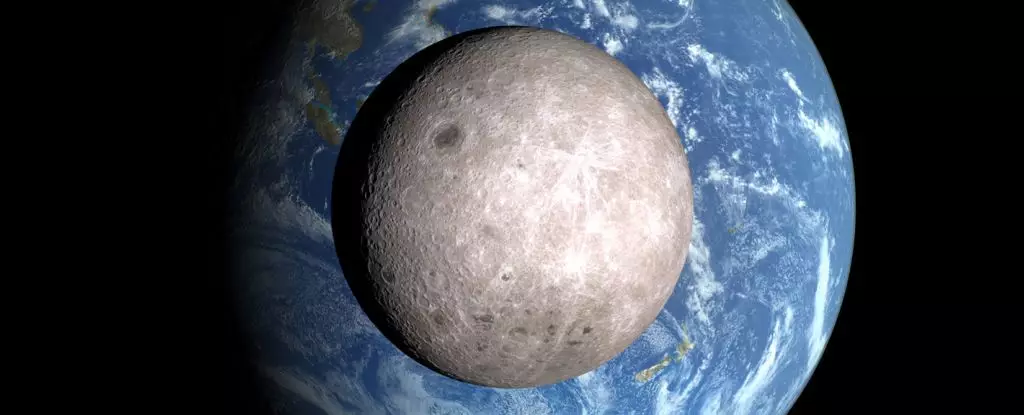The Moon has long captivated humanity’s imagination, serving as a silvery muse in our night sky and a marker of human exploration. Recent discoveries, however, have unveiled stark contrasts beneath its surface. A revelation that the Moon’s water distribution is uneven sheds light on a phenomenon that could reshape our understanding of lunar geology. The far side of the Moon, the portion hidden from Earth’s gaze, is decidedly drier and has a surface riddled with craters, while the near side boasts vast basalt plains. This disparity raises questions about the developmental history of the Moon and its evolution over billions of years.
Understanding the geological history of the Moon is more than just an academic pursuit; it has implications for lunar exploration and potential colonization. The presence—or lack—of water could inform whether future missions will find it easier to establish a base on one side versus the other. The analysis by researchers from the Chinese Academy of Sciences suggests that the Moon was shaped not just by the violent birth from a colossal impact but also by an uneven cooling process, exposing the profound complexities of its formation.
Water as a Key to Understanding Lunar Evolution
The examination of lunar samples, particularly from the South Pole-Aitken Basin collected by China’s Chang’e-6 mission, provides critical insights into the Moon’s water abundance—or the startling lack thereof. The researchers found that the sample had a mere 1 to 1.5 micrograms of water per gram of rock, a stark contrast to the near side’s abundant water variability. This scientific mission has opened a Pandora’s box of questions about the Moon’s geological past and the processes that contributed to its current layout.
Moreover, the varying water contents are not merely scientific curiosities—they play a crucial role in the potential for future lunar explorations. Water is an essential resource for sustaining human life, and its scarcity on the far side could limit the viability of establishing a permanent presence on that side. As we set our ambitions on lunar habitation and exploration, understanding the water distribution is as significant as knowing the terrain itself.
The research team posits that these findings offer critical constraints on the hypothesis of the giant impact theory that explains the Moon’s genesis. If the hypothesis holds true, it indicates an even grander cosmic ballet of planetesimals and impacts that shaped not only the Moon’s surface but also its internal chemical composition. A thorough understanding of the Moon’s water distribution could potentially influence future models of planetary formation beyond our solar system.
Possible Explanations for the Lunar Drought
How can we explain the pronounced difference between the two hemispheres? The leading theories suggest a combination of thermal dynamics and the aftermath of the cataclysmic impact that birthed the Moon. The phase of the Moon’s cooling process, influenced by Earth’s gravitational pull, may have led to uneven crust thickness—thinner on the near side versus thicker on the far side. The greater volcanic activity on the near side produced the vast basaltic plains, which remain abundant, while the far side stumbles in its geological offerings.
Another potential explanation involves the impact event itself—could it have gravity-centrically pushed more material toward Earth’s side? The wider implications of this idea could challenge long-held assumptions about planetary formations and cement the significance of impact events in celestial evolution. It is an assertion that deserves further scrutiny, especially as we prepare to launch additional exploratory missions to gather more data.
A Call for Future Exploration
As we unravel the tapestry of the Moon’s geological history, one thing becomes clear: humanity is only at the beginning stages of understanding our lunar companion. While the Chang’e-6 mission has provided invaluable insights, it is a stark reminder of just how much we have yet to learn.
Future lunar missions must focus on gathering samples from various locales to draw broader conclusions about the Moon’s water distribution and composition. The need to explore the far side is particularly pressing, not just as a scientific endeavor, but as a vital step toward realizing a sustainable human presence off-planet. The Moon, with its hidden secrets and craggy terrain, is not just a rock in the sky; it could become a gateway for humanity’s expansion into the cosmos. Embracing this challenge is not just an act of exploration; it is a testament to our innate curiosity and desire to unveil the mysteries of the universe.


Leave a Reply